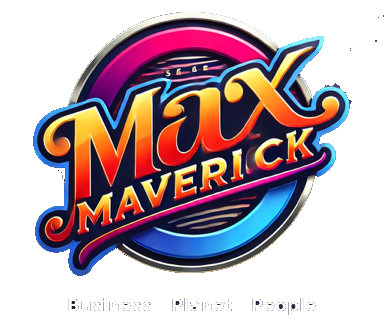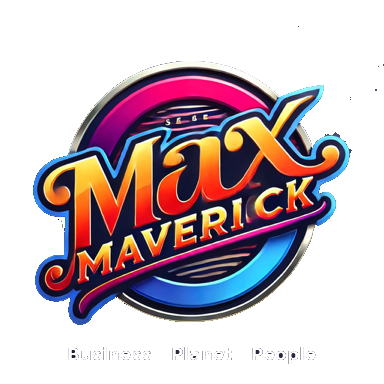Maximizing Postmerger Transformation Success through Talent and Capability Building
Most CEOs recognize the transformation opportunities inherent in an M&A transaction. As we’ve noted previously, the deal can be a catalyst for reimagining the strategy of the combined business; identifying and pursuing new sources of value; enhancing operations, or the way the business executes on its strategy; and attracting and developing new talent and capabilities.
Of those four opportunities, the last one—the talent factor—holds perhaps the most promise in terms of using a transaction as a platform for launching and succeeding with a full-scale transformation. In our experience, the new combined entity will thrive only when CEOs take the time to fully rethink the strategy underpinning their business and overhaul their approach to ensuring they have the right talent and capabilities to deliver on that strategy. In this way, they are less likely to experience skill gaps and suboptimal performance as they integrate and transform—and more likely to attract, develop, and retain the next generation of leaders.
To improve the odds of success with postmerger transformations, CEOs will need to shift their approach to identifying, sourcing, deploying, training, and retaining top talent. In this article, we lay out a framework for doing just that. Senior executives will also need to be clear about the type of culture they’re aiming to establish in the combined entity; they must look beyond high-level diagnostics and fully embed new ways of working at all levels of the organization.
Consider a recent merger between two packaging businesses that created more than $1 billion in shareholder value as well as a 45 percent EBITDA uplift. Several factors—strategy, a focus on value, and execution—contributed to the packaging company’s transformation success. But a focus on talent and capabilities was arguably the most crucial: The packaging organization performed an end-to-end evaluation of the talent in front of it, invested heavily in upskilling those senior and midlevel managers whose roles would be most critical to achieving reframed business objectives, developed targeted capability-building programs, and conducted an organization-wide culture diagnostic and change program. The executive team didn’t just identify talent gaps; it embarked on a full-scale transformation.
As this example suggests, CEOs and executive teams cannot afford to overlook the importance of talent and capability building to the success of postmerger transformations. When leaders make the effort to match the right talent to the right roles, they increase the odds that transformation initiatives will take hold and grow. What’s more, the transformation can provide “crucibles,” or meaningful experiences for individuals who can later transition into leadership roles.
How can talent drive success with postmerger integrations?
It’s the people who will drive deal success and transformation through M&A. It’s critical for CEOs and executive teams to systematically assess the talent, skills, and capabilities they will need to realize their ambitious goals—and not just for day one but for the long term. This process should start as early as possible during the diligence phase, when teams are first thinking about the overarching strategy and the structure for the combined entity.
Mapping talent to value at this early juncture can help CEOs and executive teams identify the roles that are most important to meet the strategic objectives of the combined entity. The goal here is not just to identify critical integration roles but rather to fully assess the talent available across both entities to enable a post-M&A transformation. Depending on transformation objectives, CEOs and executive teams can build specific role requirements and ensure that the most critical positions are filled with the highest performers.
During the integration and transformation at one technology company, the executive team reviewed about 100 roles at different levels, all the way up to the C-suite, to understand role requirements and set the appropriate KPIs. For each role, leaders considered whether it was designed to protect value (with a focus on keeping the existing business up and running) or to create value (with a focus on pursuing new opportunities through the combined entity). New role requirements were heavily tailored toward specific transformation initiatives, and the technology company updated its hiring and retention policies to bolster its pipeline for those junior roles that it deemed critical to integration success. As a result, almost 70 percent of the reviewed roles were replaced throughout the transformation process.
Once the strategy and structure of the combined entity are defined, CEOs and executive teams should give “people” the same attention they give the strategic, financial, and operational requirements for integration and transformation success. Specifically, they should perform a talent diagnostic, launch capability-building programs, and rethink the combined entity’s approach to culture.
Perform a talent diagnostic
When it comes to transformational M&A, any discussions about talent need to go beyond traditional integration themes or a focus on building a capable yet siloed transformation team. The entire organization needs to be mobilized, and all available talent assessed. According to one Fortune 200 CEO, the success of its postmerger transformation was due to the executive team’s constant review and refinement of the “talent equation.”
A comprehensive talent diagnostic will involve the following steps:
- Identify critical senior roles. Which roles will matter most for long-term performance in the combined entity and for the success of the transformation? Our experience suggests that about 40 transformation-critical roles within an organization generally create 80 percent of the total value—and these roles are not necessarily strictly defined by hierarchy. They can be many levels removed from the CEO. The most critical senior roles should be defined according to the value creation opportunities and strategic priorities associated with a transformation. In one recent merger, the executive team of the combined entity began to plan for a future IPO before the merger took place. As a result, the team prioritized discussion and development of senior roles and capabilities in finance and public relations in order to enable the IPO further down the road.
- Identify critical midlevel and junior roles. Individuals below the senior-most level are also central to the success of postmerger integration and transformation. CEOs and executive teams should consider the skills required from these employee cohorts—looking at the current and future demand and supply of these roles, including projecting the availability of midlevel and junior talent in important locations over the next three to five years. The effort is worth it: Our research suggests that transformations are more likely to succeed when at least 7 percent of employees take ownership of the transformation. In the case of the merger between two packaging businesses cited earlier, the executive team looked at talent and skill status and requirements six levels below the CEO and produced detailed role cards for 100 critical roles required for its transformation program to succeed.
- Conduct a full gap analysis. Having identified the most important roles required, the next step is to assess the potential gap in those skills available within the organization. In our experience, up to 10 percent of transformation-critical roles in a postmerger integration typically don’t exist in either the parent or target companies and need to be created from whole cloth. Some roles do exist but haven’t been accurately defined, creating inefficiencies, and many other roles are simply staffed with the wrong talent.
- Take steps to close the gap. Using the data from the gap analysis, CEOs and executive teams can begin to address role mismatches and skill shortages or overages. They can establish talent management initiatives, set concrete milestones, and define and rigorously track KPIs with help from a transformation office. As they execute on these initiatives, it may be helpful for CEOs and executive teams to stand up a centralized, dedicated cross-functional team to address all talent needs, what McKinsey calls a talent “win room.” That team would partner with business owners, technical leads, and human resources representatives to drive the transformation process and pace of change.
Launch capability-building programs
Even when roles are staffed with the most appropriate talent, capability gaps will likely still need to be addressed in most transformation-critical roles. The importance of supporting talent with targeted capability building in integrations and transformations is clear: McKinsey research shows that organizations that prioritize and invest in learning early in their transformations are more likely to capture and sustain value.
But while CEOs continually cite capability building as a priority agenda item, many still struggle with it; their postmerger upskilling programs, for instance, often do not go beyond a few workshops and several generic skill-building programs aimed at a small subset of the organization.
By contrast, transformational M&A requires a significant redesign of an organization’s approach to capability building. Leaders will need to maintain a dual focus on building both transformational and functional capabilities (especially those critical to delivering on important value creation opportunities).
Employees across the organization, from senior leadership to the front line, will need to be upskilled in transformation-related capabilities, including lean transformation methodology, financial-impact measurement, cross-team collaboration, and change management. Meanwhile, targeted functional training is also important—and the focus will depend on the new entity’s strategic objectives. These could include a wholesale upgrade in pricing and go-to-market capabilities or the introduction of negotiation training for category managers in the procurement group. Executives should define several strategic priorities, identify which functions are critical to deliver on these, and then be relentless in their pursuit to upskill the talent working in these functions.
Capability building was a key element in the integration and transformation at the packaging company mentioned earlier. Leaders codified best practices in areas such as marketing, operations, and procurement, built an extensive library of playbooks with this information, and made it accessible to everyone in the combined entity through an online portal. They also launched a series of capability-building programs across business units and functions. Senior leaders’ engagement in these programs was an important success factor: The sessions were hosted and attended by members of the C-suite and were considered mandatory for leaders across the organization. The resources and capability-building programs were then extended to other layers of the organization, with business unit and function leaders responsible for driving the upskilling of their direct reports.
Rethink the combined entity’s approach to culture
A postmerger transformation entails integrating processes, systems, and people—but it also means knitting together two distinct cultures, a process that can be complicated at best and value destroying at worst. The numbers bear this out: Our research shows that companies that manage culture effectively in their integration planning are about 50 percent more likely to meet or exceed their synergy targets.
The ultimate goal is to identify and keep the best parts of the culture from both organizations, introduce new practices that are essential but currently absent in both organizations, and dispense with behaviors and practices that are no longer fit for the combined entity. Most organizations do perform some form of culture diagnostic prior to an integration—but very few take this opportunity to transform the new entity’s culture in ways that can support the delivery of its strategic priorities.
The best transformation leaders take time to clearly identify which organizational health dimensions are most critical for the combined entity to succeed. These priorities should then be translated into implementation plans and specific culture-related KPIs that can be cascaded across organizations and rigorously monitored. Organizational health surveys should be conducted as part of business as usual, allowing leaders to monitor the impact of transformation and course correct as needed. This work can help to create a shared understanding of and conviction for integration efforts among employees and leaders: In our experience, when employees are actively involved in the process of defining or refining culture, they are less likely to express anxiety about transformation and more often feel a deeper sense of unity and purpose. The result is typically an inclusive environment in which teams can thrive.
Looking back at the packaging company example cited earlier, for instance: Before the merger occurred, teams measured organizational health across both organizations to identify cultural similarities, differences, and areas where interventions might be in order. But the company didn’t stop with that single checkup; leaders have institutionalized this measurement process. They conduct an annual culture survey, looking at a range of health dimensions, and they continually review the results, comparing actual responses against optimal culture goals. The findings are translated into initiatives for improving the culture as well as performance management metrics that are cascaded down to functional and business unit leaders. Critically, managers are evaluated on both the completion rate among their teams and the outcomes of the survey. About 70 percent of employees consistently fill out the survey every year, allowing senior leaders to track aspects of culture (such as leadership, accountability, capabilities, work environment) and their impact on talent.
Transforming a culture in the midst of M&A is hard. It requires significant investment, leadership commitment, and clear and quantifiable initiatives—like any other area of the transformation. Getting it right can pay huge dividends, however: It not only allows senior leaders to sharpen their focus on the most important strategic priorities for the combined entity, but it can also bolster employee engagement and encourage long-term changes in the way people work.
Not every merger or acquisition calls for large-scale transformation. Those that do, however, require a certain set of conditions—a focus on strategy and value creation and a robust execution engine. Chief among them should be a structured approach to ensuring that the new entity has just-right roles, people, capabilities, and culture; that’s the only way the new organization will be able to deliver on its transformational ambition. CEOs and executive teams should be discussing talent early—as soon as the diligence process—and give this topic pride of place alongside those other critical factors.
FAQs
Q: Why is talent and capability building crucial in postmerger transformations?
A: Talent and capability building are essential in postmerger transformations to ensure that the new entity has the right people with the right skills to drive success and sustain value creation.
Q: How can CEOs and executive teams enhance talent and capability building post-merger?
A: CEOs and executive teams can enhance talent and capability building by conducting a comprehensive talent diagnostic, launching targeted capability-building programs, and rethinking the combined entity’s approach to culture.
Conclusion
In conclusion, maximizing postmerger transformation success through talent and capability building is a strategic imperative for CEOs and executive teams. By focusing on identifying the right talent, aligning capabilities with transformation objectives, and fostering a culture that supports strategic priorities, organizations can increase the likelihood of successful postmerger integrations and transformations. The key lies in early and continuous investment in talent and capability building, alongside a structured approach to culture transformation. With these elements in place, organizations can navigate the complexities of M&A transactions and emerge stronger and more competitive in the market.


